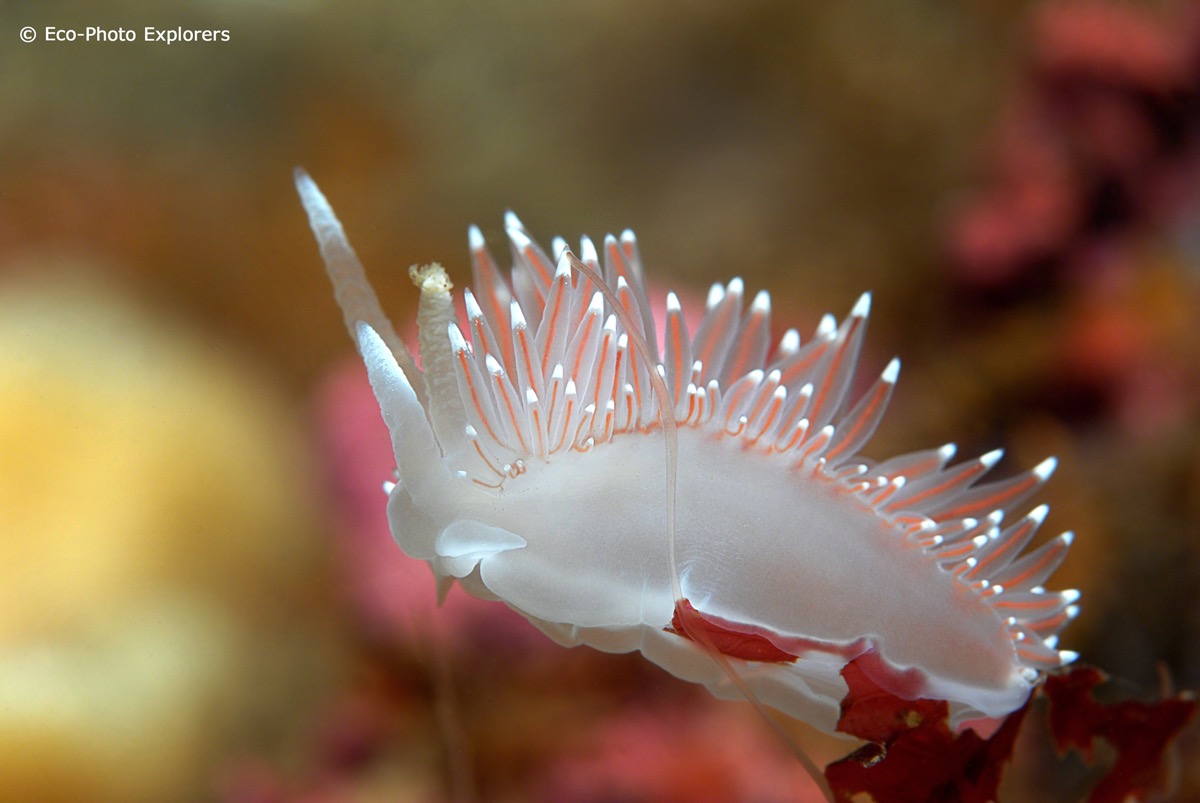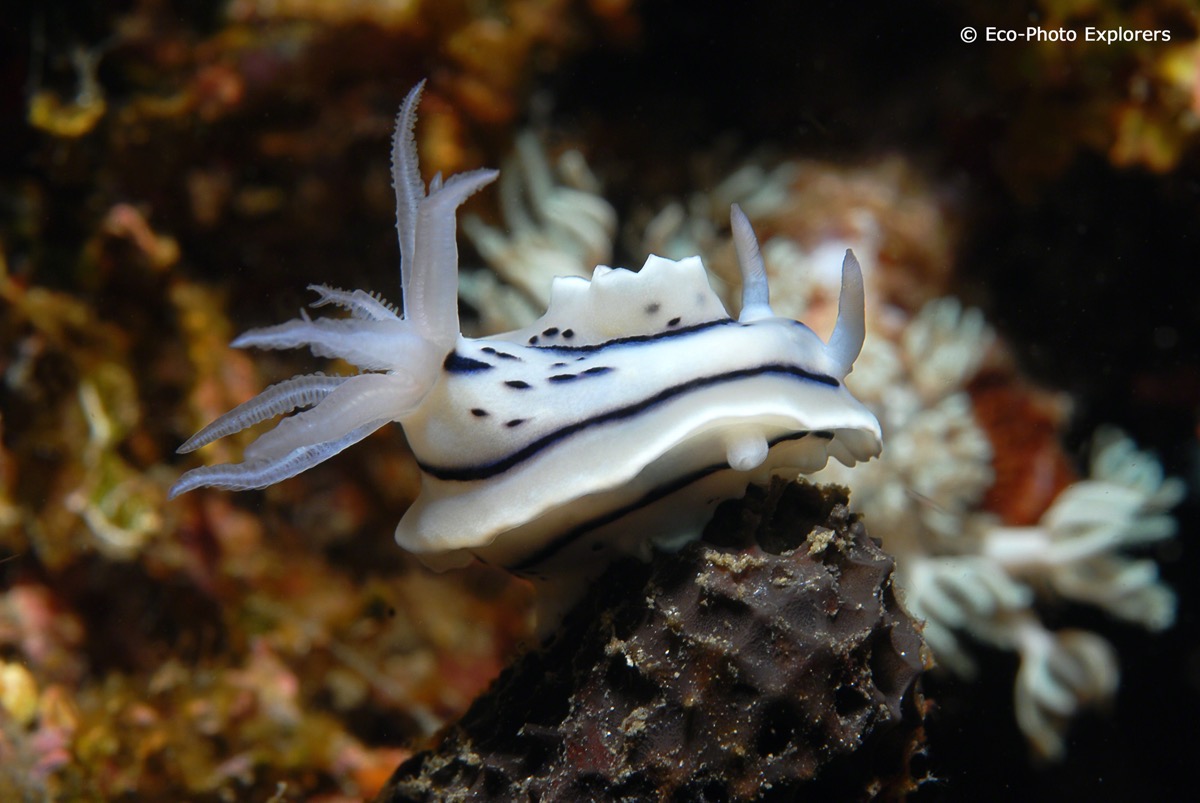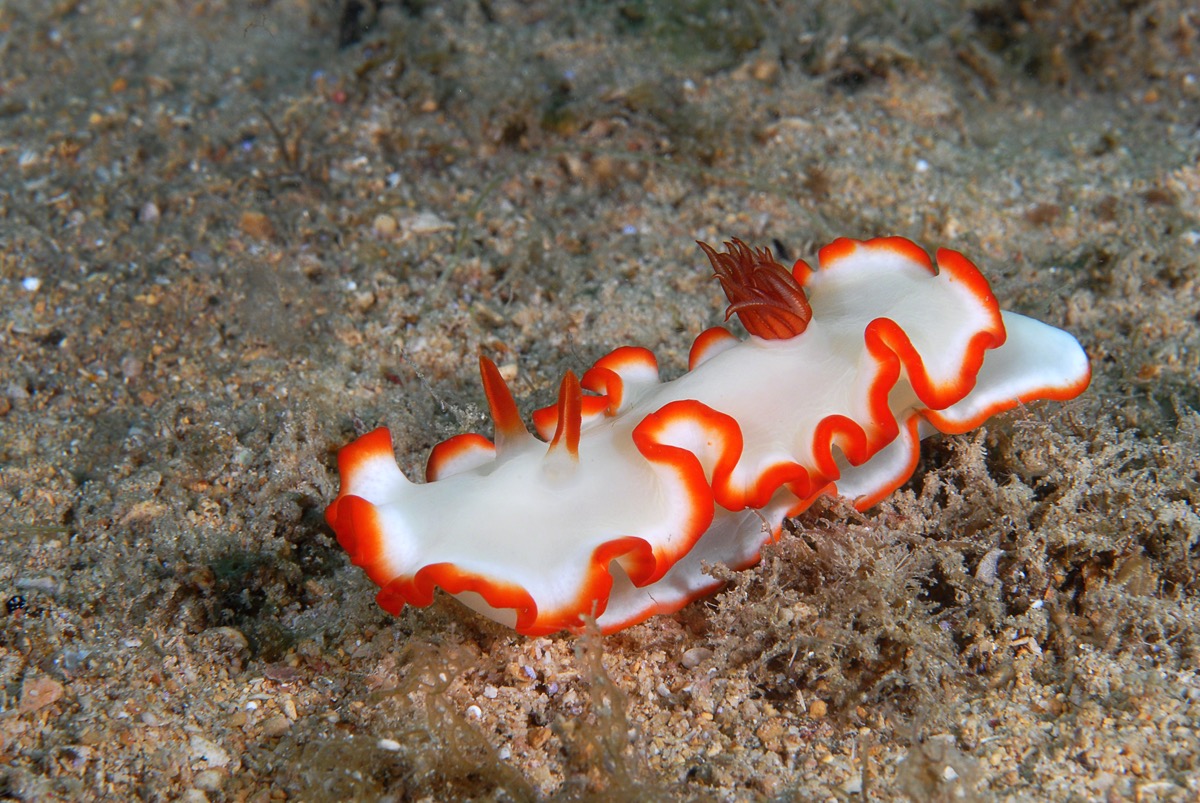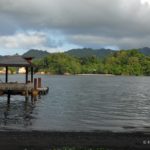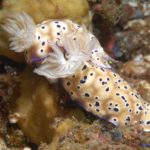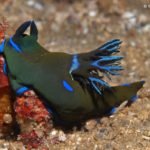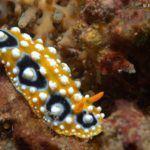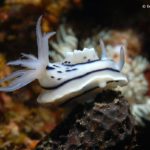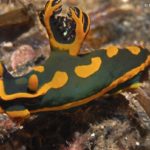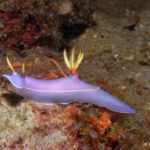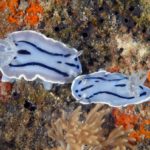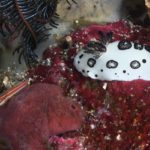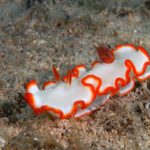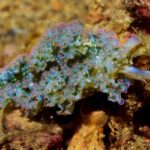What diver doesn’t marvel at the sight of a massive school of Barracuda hovering over a tropical reef? Or become mesmerized by a mammoth sized Whale Shark emerging from the deep blue waters along a coral dropoff? Or hyperventilate when witnessing the miracle of an aggregation of Hammerhead Sharks overhead silhouetted against the surface of the ocean?
Words & Photos by Michael Salvarezza Christopher P. Weaver
We all love big animals and many of us travel far and wide to find them.
But hidden among the nooks and crannies of the reefs and rocks below is a world of incredible diversity teeming with tiny, but magnificent, creatures that are every bit as beguiling as their larger brethren.
And perhaps none are more spectacular than the Nudibranchs.
Nudibranchs are a large family of soft-bodied marine gastropod mollusks that lack the shells of their relatives. Taxonomically, they are a family of opisthobranches (sea slugs), within the phylum Mollusca (mollusks), and are often just referred to as sea slugs.
The name “nudibranch” is derived from the Latin word nudus (meaning “naked”) and Ancient Greek word brankhia (meaning “gills”). This is an appropriate description as these creatures utilize branchial plumes on the outside of their bodies to breathe.
Nudibranchs can be found in all the world’s oceans, and their range extends from the shallowest waters to depths over 8,000 feet. The adults of the smallest species can be as minuscule as 0.15 of an inch while those of the largest species can grow to over 23 inches in length.
Perhaps most intriguing about these creatures are the dazzling colors they display. Often, a Nudibranch can be spotted amongst its otherwise drab surroundings as a brilliant flash of color. Many scientists believe the garish coloring is a warning signal to potential predators: since Nudibranchs are often distasteful or toxic when eaten, the coloration serves as an advertisement on the reef that the animal should not be eaten!
All Nudibranchs are carnivorous. They may look as if they are casually creeping along the bottom but, in reality, they are on the hunt. Some feed on sponges and others consume hydroids and bryozoans. Indeed, this is the secret to their toxicity: the sea slugs are able to store the stinging nematocysts of their prey and use them in their own self-defense.
Nudibranchs are also known to eat anemones, tunicates, barnacles, and even jellyfish. One species of Nudibranch is a specialized predator of siphonophores, the most well-known of which is the Portuguese Man-Of-War.
Some are hunters of other species of sea slugs and some are known to be cannibals, eating members of their own species. These dainty looking creatures are actually quite ferocious in their own way!
Although they are hermaphroditic, Nudibranchs cannot fertilize themselves and do need to mate to reproduce. They produce eggs, often in a gelatinous spiral that can contain as few as just 1 to 2 eggs to as many as 25 million eggs. Perhaps the most recognizable egg cases come from the Spanish Dancer Nudibranch. These large sea slugs generate red-colored ribbons of eggs that can be seen drifting over the reefs. The eggs are protected by toxins consumed by eating sea sponges which deters other reef creatures from eating them.
The lifespan of a Nudibranch varies from a few weeks to upwards of a year.
Divers who spot Nudibranchs will notice that there are two general kinds of these animals: dorids and aeolids.
Dorid Nudibranchs are characterized by a cluster of brachial plumes on the back end of the animal. These are the gills they use to breathe through. Aeolid Nudibranchs differ in that they have these gills spread across the back of the animal.
Spotting Nudibranchs can make for a fascinating dive activity. With over 3000 species defined worldwide, there is never a shortage of variety to search for. We have observed Nudibranchs on coral reefs, inside caves, crawling along shipwrecks, in kelp forests and even beneath the ice in the Russian Arctic. They never cease to amaze even as they seem to be completely indifferent to divers as they methodically go about their slow-motion pursuit of food.
Photographing Nudibranchs requires familiarity with macro photography techniques. A 60mm lens is often ideal for capturing images of these creatures, although a 105 mm lens or an extension tube can be useful for the smaller specimens. Because of the size of the Nudibranchs, maximizing your depth of field is often crucial so set your camera to the smallest aperture you can work with (f/16 or higher). Other creative techniques can involve the use of snoots to provide targeted dramatic lighting. Another interesting approach is to highlight only the eyes by using a smaller depth of field, keeping the rest of the animal blurred. As the artist behind the camera, you have license to experiment with different techniques to create stunning images…all made more special by the vibrant colors and captivating shapes of these marine animals.
While Nudibranchs are found in every ocean, some of our favorite places to spot them lie within the coral triangle, a section of the western Pacific Ocean that includes the Philippines, Indonesia, Malaysia, Papua New Guinea, Timor Leste and the Soloman Islands. Some of the world-class dive sites in this area that produce great Nudibranch sitings are the Lembeh Straight on Indonesia’s North Sulawesi Island, Puerto Galera and Verde Island in the Philippines, and the Tubbataha Reefs, also in the Philippines.
In addition to the Coral Triangle, we were able to successfully photograph Spanish Dancer Nudibranchs and their egg cases on a night dive during a recent expedition to the Red Sea. The atolls of the Maldives have also proven to be a good place for us to capture images of Nudibranchs.
Some of our most interesting Nudibranch sitings have come in colder waters. In Iceland, as we explored the ecosystem around Strytan, a unique underwater hydrothermal vent in the northern part of this country, we encountered several interesting species of Nudibranchs. In the shallow waters of Alaska’s Prince William Sound, we found a number of species of very beautiful Nudibranchs creeping along blades of reed grass. And in Norway, we found Nudibranchs adorning the remains of shipwrecks in some of the deep-water fjords. Indeed, species of Nudibranchs can be found worldwide, including our home waters of New York.
Successful Nudibranch hunters learn to focus their attention on the reef and the bottom substrate itself. Rather than swimming quickly over the reef trying to cover a lot of ground, slow down and examine small sections of reef carefully. Nudibranchs are slow moving, and even though they are often ostentatiously colored, they still can be difficult to find. When searching, avoid contact with the reef or disturbing the environment. And never handle a Nudibranch to re-position it for a better camera angle. Ethical photographers never manipulate the subject or the surrounding environment to create an image; wait patiently and the Nudibranch will surely move in a better position as time goes by.
In some regions, muck diving is sometimes the best way to find and photograph Nudibranchs. It is actually quite interesting to see a flamboyantly colored sea slug crawling along a silty, sandy bottom with no place to hide…safe in the knowledge that it will not be eaten by a predator because of its toxic flesh.
Next time you are thinking about how to spice up your dives, consider becoming a Nudibranch hunter. It might just turn into a lifelong obsession!
- Lembeh Straight in Indonesia is a Nudibranch hunter’s paradise
- A Dark Margin Glossodoris
- An Armanid Nudibranch from Indonesia
- A Tyson’s Risbechia from the Philippines
- A Gloomy Tambja from the Philippines
- A Gloomy Tambja from the Philippines
- Nudibranchs use their gills to breath and the Rhinophores for smell and taste
- Nudibranch from Strytan in Iceland
- Gabriella’s Tambja from the Philippines
- Bullock’s Hypselodoris
- Willan’s Chromodoris demonstrating trailing behavior
- A Funeral Jorunna Nudibranch
- Avern’s Glossodoris from the Philippines
- A Nudibranch known as the Lettuce Sea Slug from St. Kitts
- An Opalescent Nudibranch on the seagrass in Alaska’s Prince William Sound
- A Spanish Dancer from the Red Sea
Words & Photos by Michael Salvarezza Christopher P. Weaver

